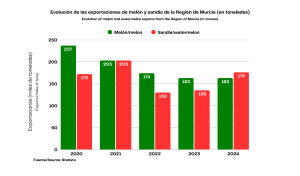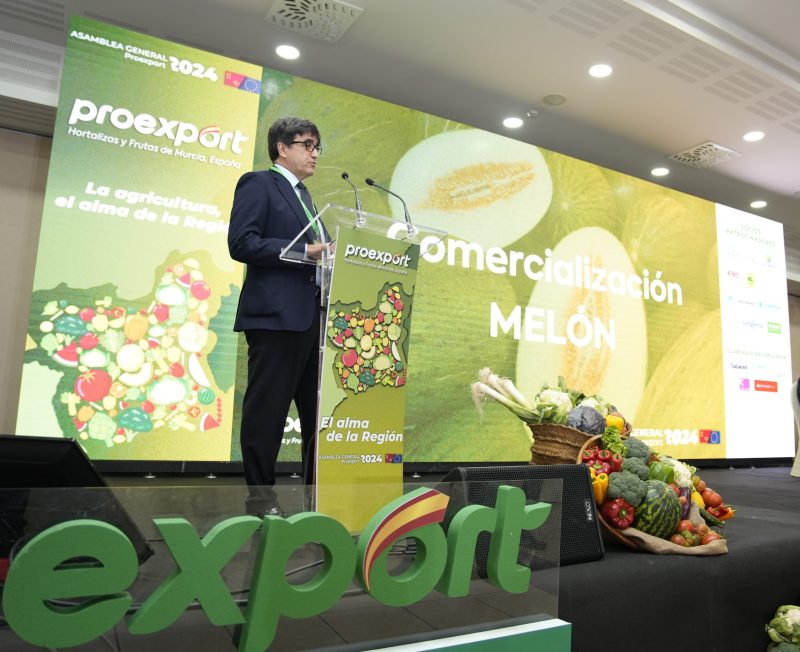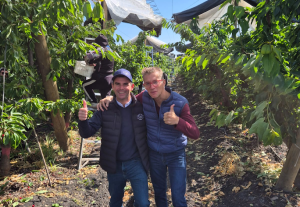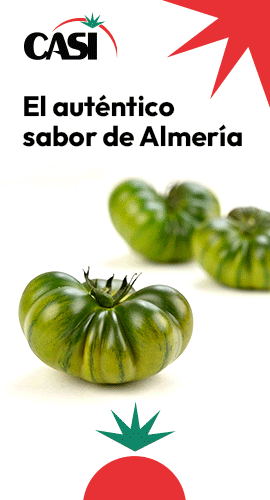Fruit Today magazine spoke with the sector leader, who shared this and other updates on the association he presides over.
How is the current melon and watermelon campaign shaping up in the Region of Murcia? What impact have the persistent March rains had?
Uncertainty is the dominant feature of this campaign, as has been the case in recent seasons.
As a result of the rainfall in March, the vast majority of companies experienced a 10–14 day window during which they were unable to plant.
Although planting resumed later on, the land could not be prepared under optimal conditions, so we can say that the start of the campaign in Murcia may be marked by a product shortage for around 10 days, followed by low yields in the weeks thereafter.
It’s fair to say that the continuous days of rain will be decisive for how the campaign unfolds.
On the other hand, the amount of rain could be beneficial for plant growth, as it has left the soil in an ideal condition to absorb all the nutrients needed for proper development.
What is the planted area and the expected volumes?
The planted area in the Region of Murcia totals approximately 10,500 hectares of melons and watermelons combined, which is expected to result in a total volume of around 550,000 tonnes.
In terms of varieties, which melon types are gaining or losing ground?
Overall, the planted surface area for each melon type this year is very similar to previous campaigns, with no major changes observed.
In terms of area, Galia and Amarillo remain the dominant varieties in our region.

How would you assess the performance of the markets, both domestic and for export?
Market behaviour regarding melon consumption is, at the same time, very easy and very difficult to predict, as it is entirely linked to weather conditions—especially in the case of exports.
In the domestic market, with our warm summers, consumption is heavily influenced by quality and retail price.
RELATED NEWS: Proexport promotes ‘made in Spain’ fruits & vegetables in Berlin
Conversely, when we talk about exports, although a competitive price always helps to stimulate sales, adverse weather can completely wipe out demand.
What challenges does the crop face in the region?
Field yields remain the key challenge year after year.
Restrictions on the use of phytosanitary products are one of the biggest challenges we currently face. We are constantly seeing the emergence of new pests and diseases that evolve and spread more rapidly, and we are gradually running out of tools to fight them.
Of course, plant health is not solely dependent on phytosanitary treatments. Climatic conditions also play a very significant role in the development of our crops. In recent years, we’ve experienced cool, rainy springs followed by extremely hot summers—this climatic “polarisation” affects crop health considerably.
Is watermelon proving to be a better alternative for farmers?
In recent years, we’ve seen an increase in the number of hectares planted with watermelon, while melon acreage has remained more stable.
This is because watermelon yields per hectare are higher than those of melon. As a result, farmers tend to prefer varieties with greater productivity in the field.






















